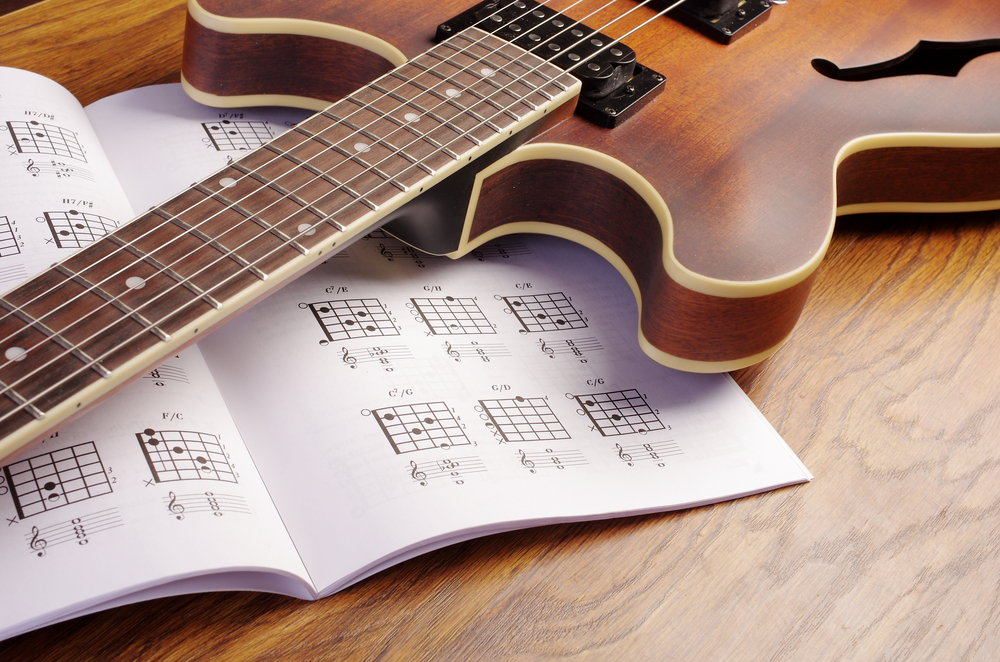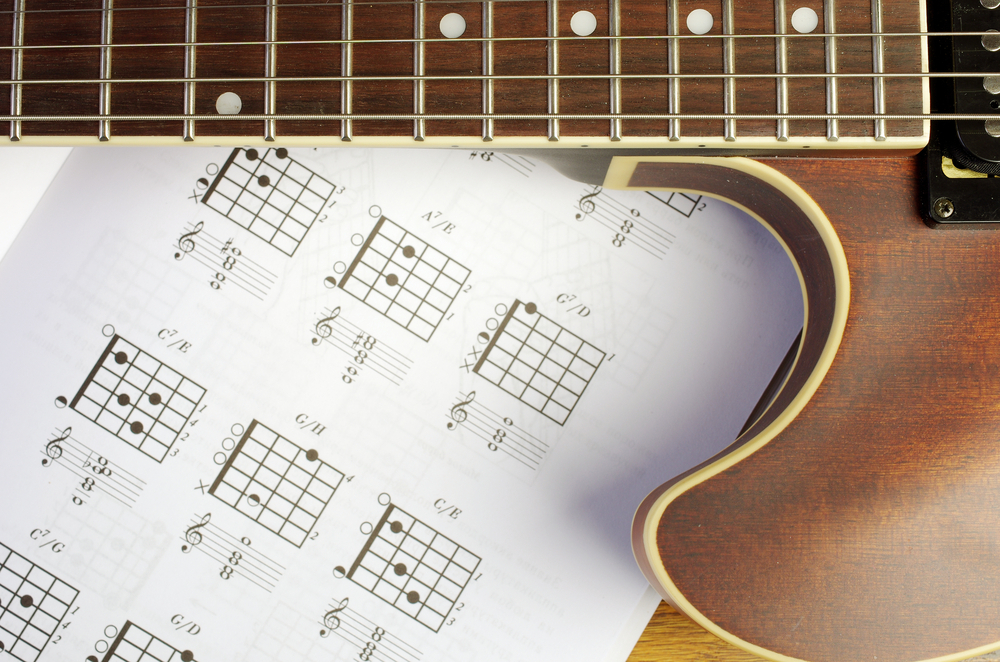A nice chord progression in CA nice chord progression in C
Here we use only open positions in all fourths tuning. The top note of the voicing is G and it isn't changed throughout the progression. It functions differently over each

Here we use only open positions in all fourths tuning. The top note of the voicing is G and it isn't changed throughout the progression. It functions differently over each

In order to create an open voiced triad, take a closed voiced triad and raise the middle note an octave higher. In all fourths tuning, there are less shapes to

Learn Maj7, Min7, Dom7, Min7b5, Dom7sus4, 7#5, Dim7, Maj6, Min6, Min9, 9, 7b9, 7#9, 13– at least 2 forms for each. These chord forms are in all fourth tuning

In this part, we’ll take a look at intervals that are placed 3,4,5 strings away from the root note. The first tip to remember all of these interval is to

Learn guitar chords that fit with Ionian mode or major scale

This exercise will help you remember different shapes of altered chords. Play the following progression using the chord shapes below. Functionally, the chord progression is I7 – VI7 – II7

Visualize the fretboard by finding any interval from the root note

Instead of playing the full chord, you can simplify by using shell voicing. In shell voicing, you play only the chord tones which are the root, 3rd and 7th. Below

Improvising over a simple chord is much more fun than you might think. The simpler the chord is, the more improvisational options are available. Why? Because you have less chord

This is the super simple, quick way to find the available tensions for dominant 7th and alternated dominant 7th chords